



Table of Contents
- Introduction
- Types of Stirrups in Construction
- Importance of Stirrups in Construction
- Design Considerations for Stirrups
- Conclusion
- Faq's
Introduction
Stirrups are essential reinforcement components in reinforced concrete structures, designed to provide shear resistance, stability, and strength to beams and columns. These closed-loop steel reinforcements encircle the main longitudinal bars, holding them in place and preventing buckling under compressive loads. Their primary function is to resist shear forces that can cause diagonal cracking and eventual structural failure. Without properly placed stirrups, reinforced concrete members are prone to weakening over time, reducing the overall durability of a structure. Stirrups are particularly crucial in high-load-bearing structures such as bridges, skyscrapers, and earthquake-resistant buildings, where they help in absorbing stress and redistributing loads efficiently.
The use of stirrups is guided by engineering standards and design codes, ensuring that they meet shear resistance and structural safety requirements. Factors such as spacing, shape, size, and anchorage influence the effectiveness of stirrups in preventing shear failure and maintaining structural stability. In seismic-prone regions, specially designed seismic stirrups provide additional ductility, enabling buildings to withstand earthquakes and vibrations. By reinforcing concrete members and improving load distribution, stirrups play a vital role in enhancing the longevity, safety, and performance of construction projects.
Also Read: Green Concrete: Your Next Home Could Be Greener Than You Think
Types of Stirrups in Construction
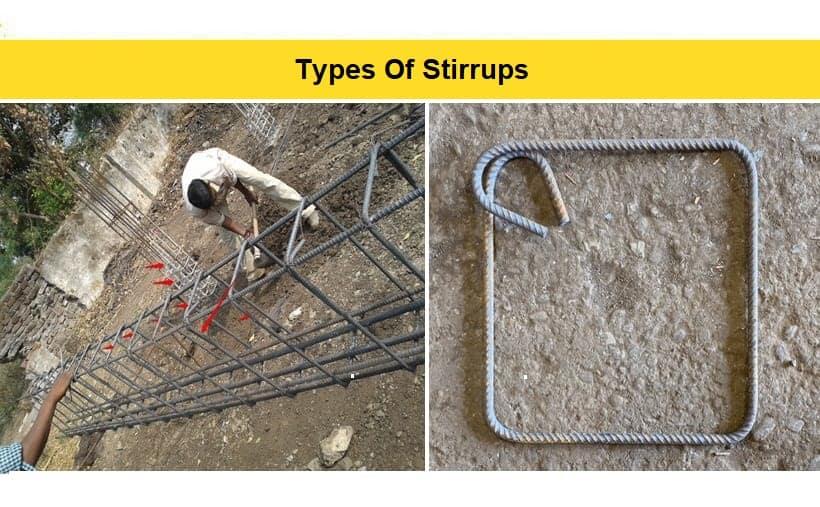 Types of Stirrups, Daily Civil
Types of Stirrups, Daily Civil
The selection of stirrup types is influenced by the structural requirements and design specifications of a project. Each type serves a specific purpose in reinforcing beams, columns, and other load-bearing structures. Below are the common types of stirrups used in construction:
1. Single-Legged Stirrups
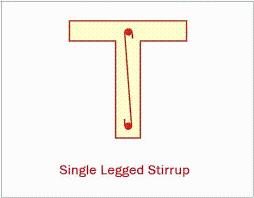 Single-Legged Stirrups, Pinterest
Single-Legged Stirrups, Pinterest
Single-legged stirrups are U-shaped reinforcements used in structures where shear forces are minimal. They are commonly found in small-scale and lightweight constructions, such as low-rise residential buildings and minor load-bearing elements. These stirrups provide basic lateral reinforcement but are not suitable for heavy loads or high-stress environments.
2. Two-Legged Stirrups (Closed Stirrups)
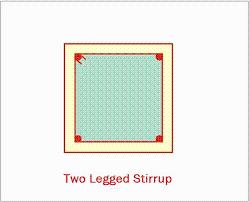 Two-Legged Stirrups, Pinterest
Two-Legged Stirrups, Pinterest
Two-legged stirrups, also known as closed stirrups, form a rectangular or square loop around the main reinforcement bars. They are widely used in beams and columns where shear forces are moderate to high. These stirrups effectively prevent diagonal cracking and enhance the stability of reinforced concrete members.
3. Four-Legged Stirrups
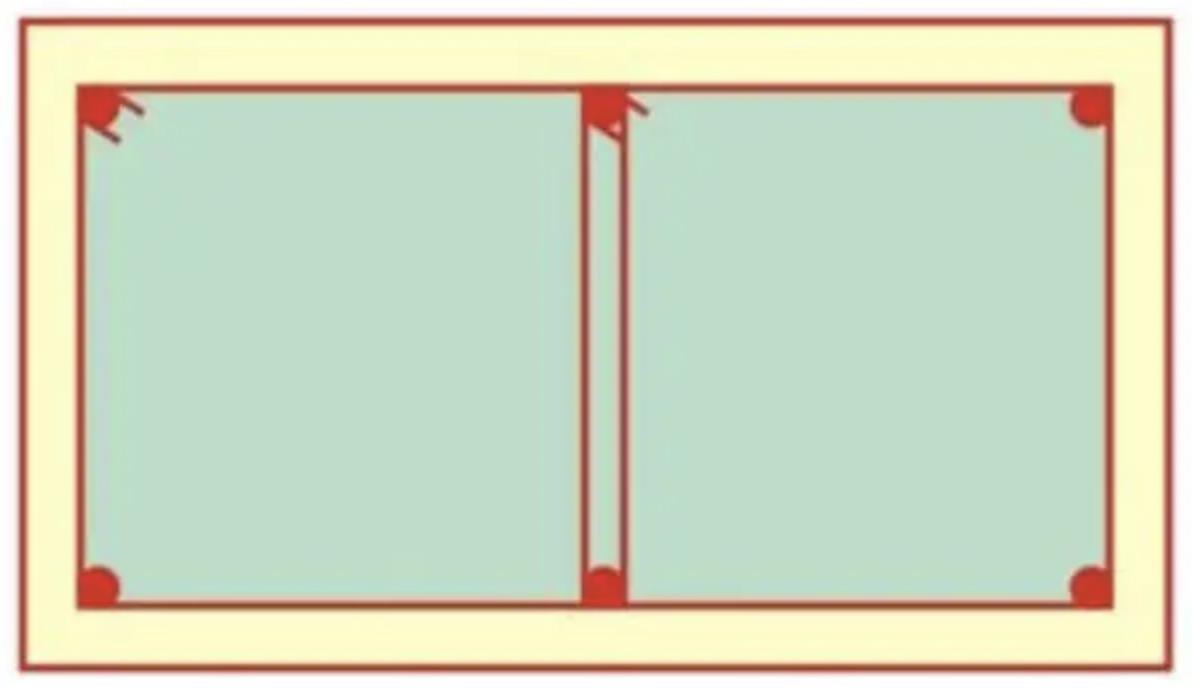 Four-Legged Stirrups, Brick & Bolt
Four-Legged Stirrups, Brick & Bolt
Four-legged stirrups provide greater support and stability, making them ideal for heavy load-bearing structures such as bridges, high-rise buildings, and industrial constructions. They surround the reinforcement bars on all sides, offering better confinement and resistance to shear forces than two-legged stirrups.
4. Six-Legged Stirrups
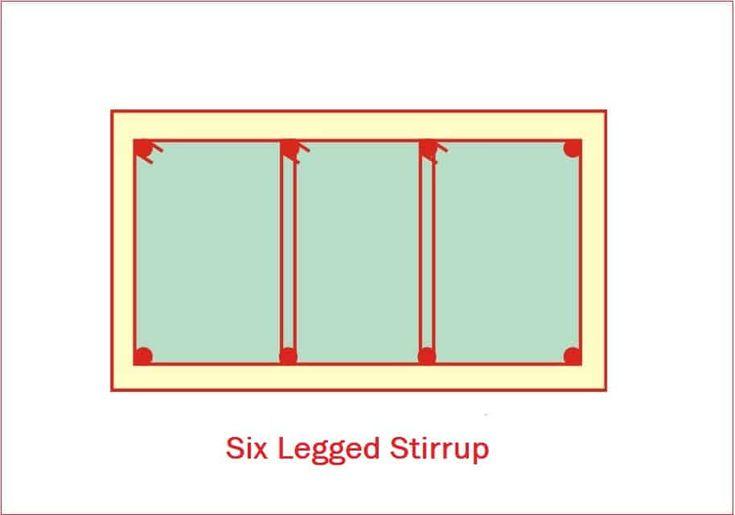 Six-Legged Stirrups, Pinterest
Six-Legged Stirrups, Pinterest
Six-legged stirrups are designed for high-stress applications where the structure is subjected to significant loads. They are most commonly used in large columns, bridges, and multi-story buildings. Their additional reinforcement bars help to distribute shear forces evenly and enhance resistance against buckling and cracking.
5. Circular Stirrups
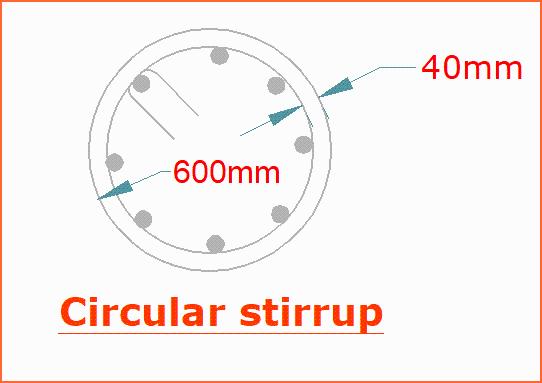 Circular Stirrups, Medium
Circular Stirrups, Medium
Circular stirrups are used in round or spiral columns, such as pillars, chimneys, and silos. Their curved shape ensures uniform stress distribution, making them highly effective in resisting lateral loads and maintaining the structural integrity of cylindrical members. These stirrups also provide better support against torsion and buckling.
6. Helical Stirrups
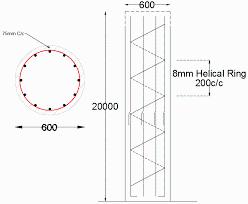 Helical Stirrups, Civilology
Helical Stirrups, Civilology
Helical stirrups have a spiral configuration, which makes them highly effective in earthquake-resistant structures. These stirrups are used in seismic zones where buildings need enhanced ductility and energy absorption capacity. By uniformly distributing stress, helical stirrups reduce the risk of sudden structural failure during seismic activity.
7. Diamond Stirrups
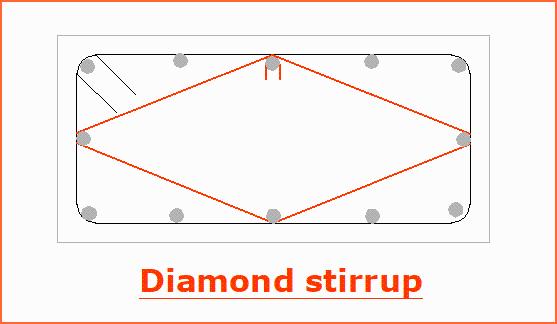 Diamond Stirrups, Medium
Diamond Stirrups, Medium
Diamond stirrups feature a diamond-shaped reinforcement pattern, providing extra strength and stability in structures exposed to seismic forces and high dynamic loads. They are often used in earthquake-prone areas where structures require greater flexibility and resilience against ground movement.
8. Open Stirrups
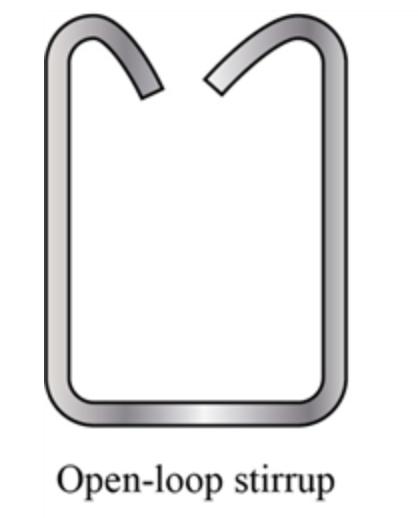 Open Stirrups, Wordpress
Open Stirrups, Wordpress
Open stirrups, as the name suggests, do not form a complete loop around the reinforcement bars. They are used in cases where design flexibility is required or where reinforcement placement needs to be adjusted during construction. These stirrups are commonly found in temporary structures, repair works, and lightly loaded elements.
9. Seismic Stirrups
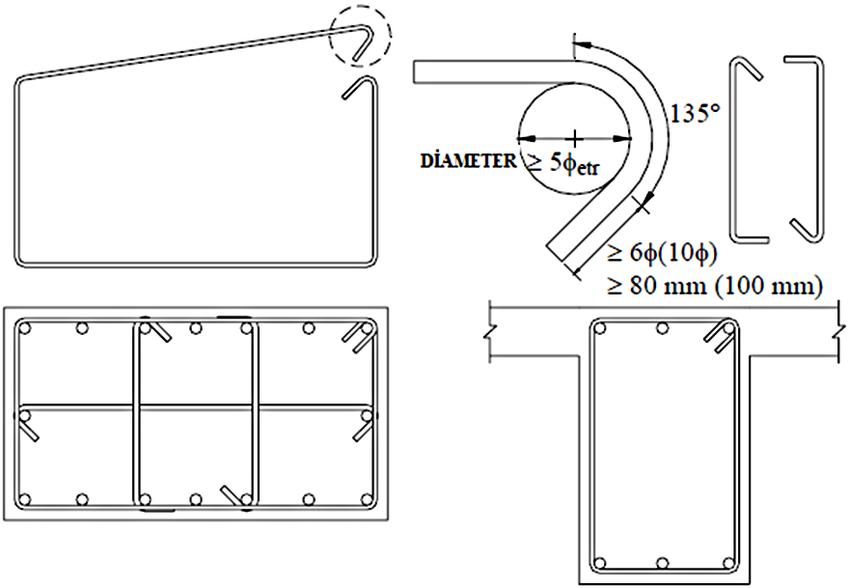 Seismic Stirrups, Research Gate
Seismic Stirrups, Research Gate
Seismic stirrups are specially designed for earthquake-prone regions, providing extra reinforcement and ductility to prevent sudden collapse during seismic activity. These stirrups improve a structure's ability to absorb shocks and vibrations, making them essential for high-rise buildings, bridges, and critical infrastructure.
10. Triangular Stirrups
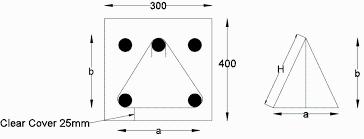 Triangular Stirrups, Civilology
Triangular Stirrups, Civilology
Triangular stirrups are used in beams and columns with unconventional designs. Their unique shape allows them to resist shear forces effectively, particularly in angled or sloped structural elements. These stirrups provide additional reinforcement in architectural and industrial projects where non-standard geometries are used.
11. Spiral Stirrups
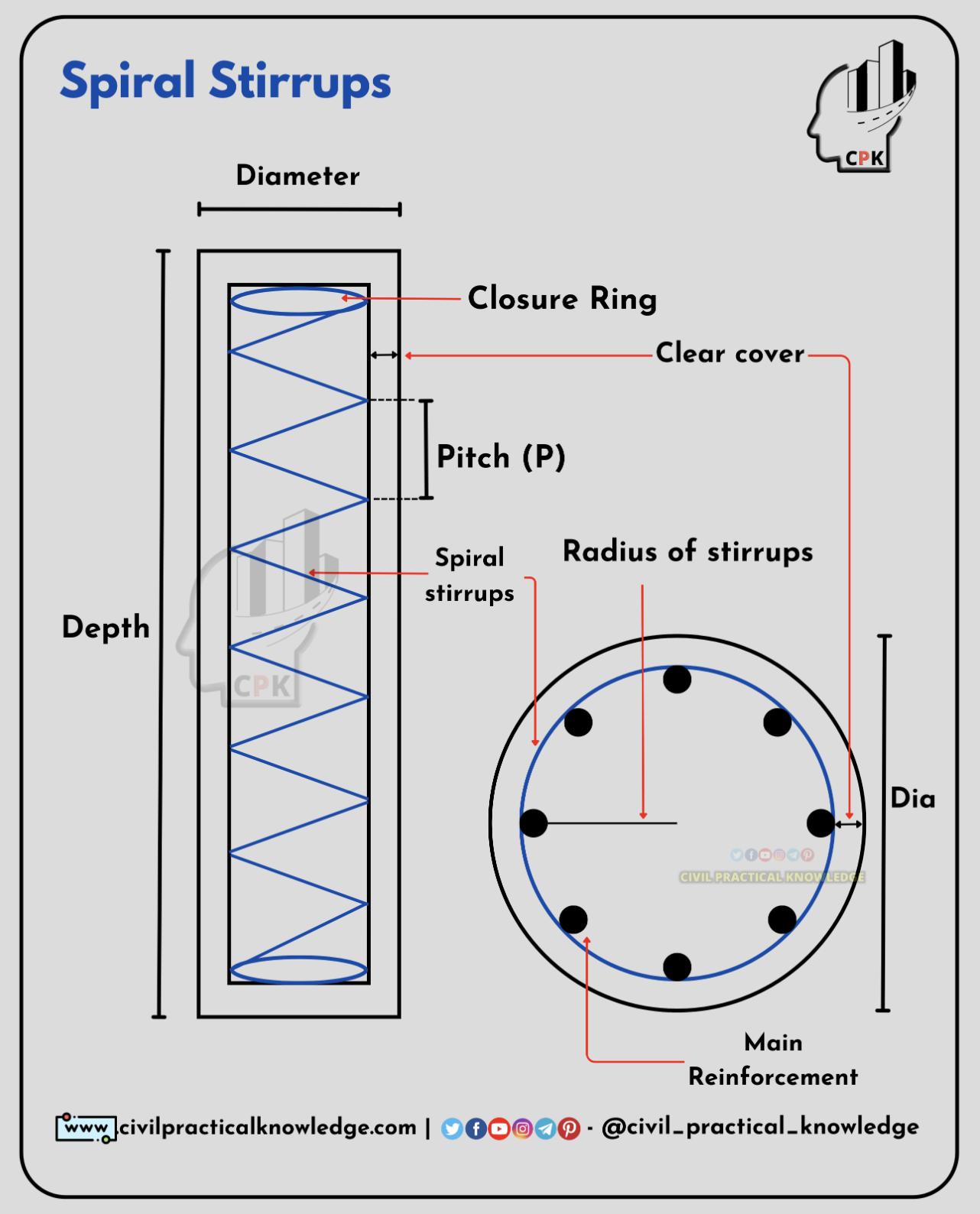 Spiral Stirrups, Civil Practical Knowledge
Spiral Stirrups, Civil Practical Knowledge
Spiral stirrups are continuously wound reinforcements used in circular columns and high-rise structures. Their design provides excellent confinement and resistance to buckling, making them ideal for critical load-bearing elements such as bridge piers and multi-story columns. Spiral stirrups also enhance ductility, allowing structures to withstand seismic and wind forces more effectively.
Also Read: Geopolymer Concrete in Construction: Applications, Benefits & Challenges
Importance of Stirrups in Construction
Stirrups play a crucial role in reinforced concrete structures, ensuring strength, stability, and durability. Their primary function is to support the main reinforcement bars and prevent structural failure under various stress conditions. Below are the key reasons why stirrups are essential in construction:
1. Shear Reinforcement
Shear forces occur in beams, columns, and slabs when applied loads create diagonal tension, which can lead to cracking and potential failure. Stirrups act as shear reinforcement, effectively resisting these diagonal forces and preventing cracks from propagating. By enhancing the ability of a structure to withstand shear stresses, stirrups contribute to its overall strength and durability.
2. Concrete Encasement
Stirrups help in the proper encasement of concrete around the main reinforcement bars, ensuring that the steel reinforcement is adequately covered and protected. This protection is critical in preventing corrosion, especially in humid, coastal, or chemically aggressive environments. By reducing exposure to moisture and external elements, stirrups enhance the lifespan of reinforced concrete structures.
3. Enhanced Ductility
Ductility refers to the ability of a structure to deform under stress without sudden failure. Stirrups significantly improve the ductility of concrete elements, allowing them to absorb energy during earthquakes, heavy loads, or impact forces. This property is particularly important in seismic zones, where buildings must withstand repeated stress cycles without collapsing.
4. Load Redistribution
During extreme conditions such as earthquakes, heavy traffic loads, or wind pressure, a structure experiences uneven stress distribution. Stirrups help in redistributing these stresses across the reinforced concrete member, preventing localized failures that could compromise the entire structure. This ensures that excessive loads do not concentrate on a single point, reducing the risk of structural failure.
5. Preventing Buckling
In columns and beams, the main reinforcement bars can buckle under heavy compressive loads if not properly supported. Stirrups provide lateral restraint, keeping the reinforcement bars in position and preventing outward deformation. This is particularly critical in slender columns and high-rise structures, where stability against buckling is a major design concern.
6. Improving Load Distribution
Proper placement of stirrups ensures that loads are evenly distributed across the entire structure. This helps in minimizing stress concentrations and preventing localized weaknesses that could lead to premature failure. Even load distribution is essential in bridges, high-rise buildings, and industrial structures, where the structural integrity must be maintained under varying load conditions.
7. Preventing Cracks and Damage
Cracking is a major concern in reinforced concrete structures, as it can compromise both aesthetic appeal and structural strength. Stirrups help in minimizing cracks caused by bending and flexural stresses, ensuring the long-term durability of the structure. By holding the main reinforcement bars in place, they reduce excessive strain on concrete and prevent progressive cracking that could lead to failure.
Also Read: House Framing and Structural Integrity: What Every Homeowner Should Know
Design Considerations for Stirrups
Proper design and installation of stirrups are crucial to ensuring their effectiveness in reinforcing concrete structures. Factors such as spacing, size, anchorage, and cover play a significant role in determining how well stirrups function in preventing shear failure, buckling, and load imbalance. Below are the key design considerations for stirrups in construction:
1. Spacing: Ensuring Adequate Shear Resistance
The spacing of stirrups directly impacts the shear strength of the structure. If stirrups are too far apart, the structure may develop shear cracks, leading to reduced load-carrying capacity and potential failure. If they are too close, they may increase construction costs unnecessarily and affect concrete placement.
The spacing of stirrups is generally determined by design codes such as the Indian Standard (IS) 456:2000. For example:
- In beams, stirrup spacing is often closer near the supports where shear forces are higher and can be increased in the mid-span where shear forces are lower.
- In columns, stirrups are spaced closely at the ends where compressive forces are high and may be increased toward the center.
- Seismic-resistant structures require even closer spacing of stirrups to improve ductility and energy dissipation.
Engineers must balance shear resistance and economy when determining the optimal stirrup spacing for a given structure.
2. Size: Selecting the Right Diameter for Structural Requirements
The size (diameter) of stirrups is another critical factor that determines their load-bearing capacity. The diameter of stirrup reinforcement is usually chosen based on:
- Structural loads: Heavier loads require thicker stirrups to provide adequate reinforcement.
- Beam or column dimensions: Larger concrete elements need stronger stirrups to support the main reinforcement bars.
- Shear strength requirements: If a structure is subjected to high shear forces, thicker stirrups with closer spacing are required.
Typical diameters of stirrup reinforcement bars in Indian construction:
- 6 mm to 8 mm stirrups: Used in light load-bearing structures.
- 8 mm to 10 mm stirrups: Commonly used in standard beams and columns.
- 12 mm or larger stirrups: Used in high-rise buildings, bridges, and heavy structures.
Selecting the correct stirrup size ensures the structural integrity of the reinforced concrete member while optimizing material usage and cost.
3. Anchorage: Ensuring Full Strength Development
Anchorage refers to the proper bending and fixing of stirrup ends so that they can effectively transfer shear forces to the concrete. If stirrups are not properly anchored, they may become ineffective, reducing the structural strength of beams and columns.
Types of anchorage used in stirrups include:
- Hooked Ends (Standard Bend at 135° or 90°):
- A 135-degree bend with a hook extension is commonly used to prevent slipping and ensure the stirrup is firmly held in place.
- A 90-degree bend may be used in non-seismic areas, but it is less effective in resisting shear forces.
- Lap Splicing of Stirrups:
- In longer beams or columns, stirrups must be properly overlapped (lapped) to ensure continuity.
- Welding or Mechanical Couplers:
- Used in specialized applications where a stronger connection is required.
Proper anchorage design ensures that stirrups develop full strength, preventing slippage and failure under high loads.
4. Cover: Protecting Stirrups from Corrosion and Fire Damage
The concrete cover around stirrups is essential for protecting the reinforcement bars from corrosion, fire, and environmental damage. Insufficient cover can lead to exposure of stirrups, increasing the risk of rusting, weakening, and potential failure of the structure over time.
Standard concrete cover requirements (as per IS 456:2000):
- 20 mm to 25 mm cover for beams and slabs.
- 40 mm to 50 mm cover for columns and footings.
- Higher cover thickness for marine structures, bridges, and chemically aggressive environments.
Proper cover ensures:
- Durability: Protects the reinforcement from moisture, chemicals, and oxidation, increasing the lifespan of the structure.
- Fire resistance: Prevents stirrups from losing strength when exposed to high temperatures during a fire.
- Structural integrity: Ensures that stirrups remain properly embedded in concrete, preventing dislodgment.
In seismic zones, high-performance concrete with additional cover thickness is often used to provide better protection to stirrups and reinforcement bars.
Conclusion
Stirrups are indispensable components in modern construction, playing a vital role in ensuring the safety, stability, and longevity of concrete structures. By understanding the various types and benefits of stirrups, engineers and builders can make informed decisions to create stronger, more durable buildings.
explore further
Latest from Editorials
More from Publications
Resources
Dwello, for every home buyer, is a way to go from 'I feel' to 'I know', at no extra cost.




